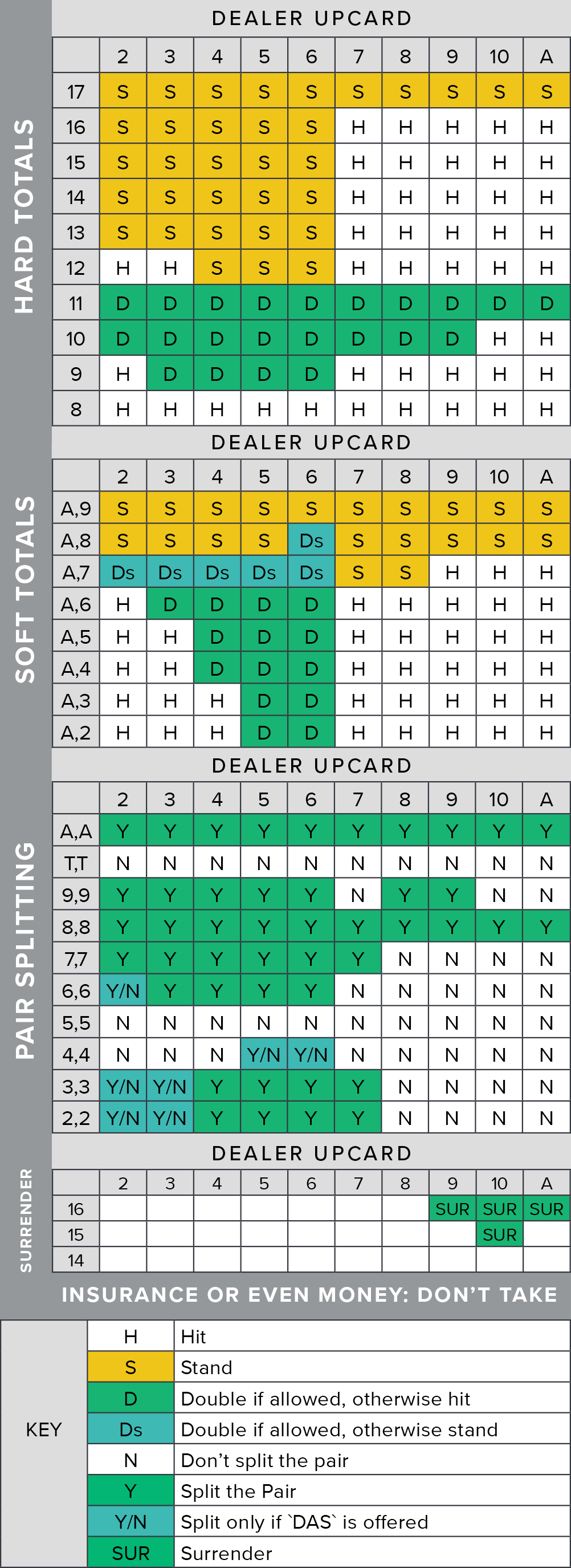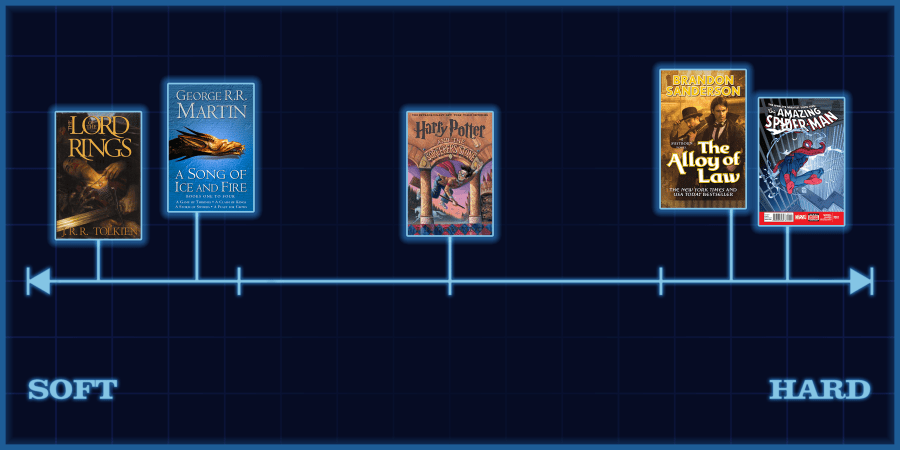Soft Vs Hard In Blackjack
Posted : admin On 4/7/2022Blackjack Soft Hands Simple Strategy; Your Hand Total Dealer’s Up Card 2-6 Dealer’s Up Card 7-A; 13-14: Hit but double down vs 5, 6: 15-17: Hit but double down vs 4, 5, 6: 18: Stand vs 2, 7, 8: Double vs 3-6: Hit vs 9-A: 19+ Stand. The Big Thicket is the name given to a somewhat imprecise region of a heavily-forested area of Southeast Texas in the United States. It is a highly biodiverse area for a temperate region, which has been described as 'America's Ark' and the 'Biological Crossroads of North America'. The micro leaks they find cause the soft soil to create a massive sinkhole that is ready to swallow up a silo filled with chemicals, along with a worker trapped on top of it. If this happens, the drinking water supply of one of Southern California's most prominent aquifers will be tainted. Offer must Blackjack Soft 17 Vs Hard 17 be claimed within 14 days of registration. All wager-free spins are available on Starburst and have a £0.10 value each; expire 5 days after credited. All winnings from the wager-free spins will be paid out in cash. Play Responsibly. Hard and Soft Hands – The Hard Blackjack Hand A hard blackjack hand differs from a soft hand in two aspects primarily. First of all, a hard hand does not necessarily need to have an ace; it may have one, but it is okay even if it doesn’t have one.
Soft 18 is among the most commonly misplayed hands in the game of 21. Being a soft hand, it contains an Ace that can be assigned a value of either 1 or 11 like on the following examples: A-7, A-2-5, and 4-3-A. It is essential to remember the correct playing decisions for soft and hard 18 differ despite the fact the two hands have the same totals.
- Bonus$300
- Bonus$300
- Bonus⋆80 Free Spins
Knowing how to approach this hand optimally can spare you lots of headaches not to mention money in the long term. Let’s take a look at the correct plays for soft 18 and the two most common examples of misplaying this hand so that you know which mistakes to avoid.

The Optimal Plays for Soft 18
When dealt a soft 18, blackjack players have a choice from several possible decisions, namely hitting, standing, and doubling down. Which of the three moves is optimal depends, first and foremost, on the dealer’s upcard. However, there are three other variables that also need to be taken into consideration – the number of cards the soft 18 consists of, the number of decks used in the game, and the dealer’s fixed standing rules (H17 or S17).
When Playing Single-Deck Blackjack
There are small discrepancies in the correct basic strategies for single, double, and multiple-deck blackjack. When you get a soft 18 in a single-deck game, the strategy recommends you to stand when the dealer exposes a deuce, a 7, an 8 or an Ace. You hit your soft 18 when the dealer is at their strongest, showing power upcards 9 or 10. The most lucrative scenario for a player with a soft 18 holding is when the dealer is particularly vulnerable to busting with upcards 3, 4, 5 or 6.
In a game where the dealer is obliged to hit soft totals of 17 (known as the H17 rule), there is only one discrepancy in the playing strategy for soft 18. You should always hit your soft 18 against a dealer with an Ace instead of standing as is the case in single-deck games played under the S17 rule (the “S” is short for “standing” and not for “soft”, mind you).
When Playing Double-Deck and Multiple-Deck Blackjack
The optimal plays for soft 18 in double-deck and multiple-deck S17 blackjack largely coincide. Basic strategy advises players to stand whenever the dealer’s upcard is a 2, a 7 or an 8. You hit your two-card soft 18 against a dealer who reveals more powerful cards like a 9, a 10, or an Ace.
Doubling down is considered the optimal decision with this hand when you are facing a dealer in the unenviable position of exposing weak cards 3 through 6. When the dealer starts with one of those cards, they stand a better chance of breaking their hand, which gives you the opportunity to potentially boost your profits through doubling.
All the plays we have listed above are correct for H17 games as well, with a single exception only – players must double down on their soft 18 against a dealer’s deuce instead of standing.
How to Approach a Soft 18 Consisting of Several Cards
You will inevitably find yourself in situations where doubling on soft 18 is recommended by the strategy chart but you are unable to execute this play since your hand contains three cards or more. Such is the case when you start a hand with 5-2, hit, and draw an Ace for a soft total of 18 against the dealer’s 5. How do you approach one such situation? Obviously doubling down is no longer an option here.
The good news is the alternative decision is also listed in the color-coded strategy charts. You will notice a small “s” next to the capital “D” that corresponds to doubling down against dealer upcards 3 through 6. This “s” indicates the alternative play is to stand when doubling is unavailable. This play is also correct when you have a multiple-card soft 18 against dealer upcards 2 through 6 in an H17 game.
The Logic Behind Some Soft 18 Playing Decisions
Players should not forget that sticking to basic strategy always pays off in the long run because the correct plays suggested there were based on computer simulations that involved hundreds of thousands of hands. In the case of soft 18, the decisions recommended by the basic strategy charts are guaranteed to earn you more profits and cause you to lose less money over the long term.
As we told you already, the strategy for a multiple-deck game where the S17 rule applies is to always hit your soft 18 against dealer power cards like 10, King, Jack, and Queen. It is estimated that always hitting against those dealer upcards will cause you to lose 57 hands and win 43 out of every 100 hands on average, excluding the pushes.
In contrast, standing on your soft 18 against a dealer who exposes a strong upcard will cause you to lose 59 out of every 100 times when you execute this play and win on the remaining 41 occasions. This may not seem like that big of a difference but it will inevitably become more pronounced the longer you play.
Soft 18 Playing Decisions Additional TipsHitting your soft 18 against the dealer’s 9, 10 or Ace may seem a little counterintuitive to the inexperienced player. One does not have to be a rocket scientist to deduce there are only three out of thirteen card denominations that can improve their soft 18 to a higher total – the Ace, the 2, and the 3.
How To Play Blackjack And Win
Cards 4 through 8 will convert your soft 18 into one of the hard totals 12 through 16 where your Ace counts as 1 which reduces you to a busting position. Drawing a 9 takes away your flexibility and gives you a hard 17 while pulling a ten-value card brings you to your starting total of 18 but hard this time.
Then why is hitting soft 18 against the dealer’s power cards preferable over standing when your chances of improving are as slim? The bottom line is you still have room for improvement with this hand. The fact basic strategy recommends a hit in this case only goes to show how weak a total of 18 is when the dealer exposes a powerful card. The average winning total in blackjack is 18.5. Because of this, players must take advantage of the Ace’s flexibility and hit their soft 18 in an attempt to improve their hand to a total of 19 or higher.
Misplaying Soft 18 – A Couple of Common Mistakes
Along with its neighbor soft 17, soft 18 is one of the most frequently misplayed hands in blackjack. In some cases, the mistakes result from lack of proper understanding of the dealer’s standing rules and how they impact the correct plays for certain hands.
Such is the case with soft 18 against a dealer showing a deuce. Many people end up misplaying this hand because they confuse the correct plays for S17 and H17 games. The optimal strategy requires you to hit your soft 17 against the deuce when facing a dealer who abides by the H17 rule and stand when you are playing under the S17 rule.
Blackjack Hands
This is why it is of utmost importance for you to check the dealer’s drawing and standing rules before you sit down at a table to play. Having a soft 18 against a dealer’s deuce gives you a negative expectation even if you make the correct playing decision each time. Misplaying this hand increases your negative expectation to a little over 13% causing you to lose $0.13 out of every dollar you wager on a soft 18 against a deuce in the long run.
The second most common mistake with this soft hand occurs when the player has a soft 18 against a dealer exposing a 7. Those who have read carefully probably remember us mentioning the optimal play for a soft 17 against a 7 is to stand. This pertains to both H17 and S17 blackjack tables regardless of whether they use single, double or multiple decks.

Soft 18 Additional TipsUnfortunately, some clueless players prefer to adopt a more aggressive approach in this situation. They believe the 7 puts the dealer at big enough disadvantage to justify doubling down on their soft 18. This approach is incorrect for a couple of reasons, starting with the fact ten-value cards outnumber all other card denominations in the deck or shoe. There are 16 ten-value cards per deck, which increases the likelihood of the dealer having a Jack, a King, a Queen or a 10 in the hole.
Soft Vs Hard In Blackjack
The second reason why doubling down on this soft total against a 7 is a bad move has to do with expected value. Playing the hand optimally, i.e. standing, comes with a positive expectation of nearly 40%, which means you will win around $0.40 per every dollar wagered in the long run. Misplaying your soft 18 decreases your expectation roughly to 35%, causing you to win only $0.35 per dollar wagered.
Soft 17 Meaning
Some may argue several cents are not that big of a loss but they should not forget all savvy blackjack players share the common purpose of maximizing their profits and reducing their losses. By doubling on soft 18 against a dealer’s 7, you are doing just the opposite. Doubling on this soft total is justifiable against this upcard only if you are an astute card counter and know when to deviate from basic strategy.